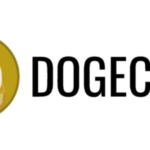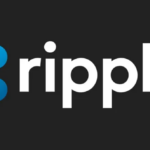Comparison of Solana, Bitcoin, and Ethereum in the Crypto Market

Solana, a blockchain platform designed to facilitate high-speed, low-cost transactions, and support various decentralized applications, is making waves in the ever-evolving cryptocurrency market. While Ethereum remains the dominant smart contract platform, Solana distinguishes itself by prioritizing real-time applications and efficient transactions. On the other hand, Bitcoin, primarily known as a store of value and a medium of exchange, lacks the specific utility focus of Solana.
Over the past year and a half, SOL, the cryptocurrency built on the Solana blockchain, has consistently outperformed Bitcoin and Ethereum in terms of price performance. However, in late February and early March, all three cryptocurrencies experienced a significant sell-off, with SOL leading the downturn. Notably, SOL prices have exhibited significantly higher volatility compared to Bitcoin and Ethereum, with an approximately 80% realized volatility over the past three months. This makes SOL almost twice as volatile as Bitcoin and approximately one-third more volatile than Ethereum.
Despite the high volatility in SOL prices, the correlation between Solana, Bitcoin, and Ethereum remains strong. Solana’s one-year rolling correlation with Bitcoin and Ethereum sits at around +0.7, indicating a positive relationship between the three cryptocurrencies. However, SOL exhibits slightly lower correlations with Bitcoin and Ethereum compared to the correlation between Bitcoin and Ethereum themselves. Additionally, all three cryptocurrencies show a positive correlation with the Nasdaq-100 index, suggesting a tendency to move in tandem with technology stocks, albeit with correlations around +0.4.
In terms of key differences, Solana stands out from Bitcoin and Ethereum in various aspects. For instance, the process of minting new Bitcoins requires 112 trillion calculations, and the Bitcoin blockchain can handle only about seven transactions per second. Ethereum, on the other hand, utilizes a proof of stake mechanism and can support approximately 30,000 transactions per second. In comparison, Solana’s validation process involves proof of history in addition to proof of stake, making it more than twice as fast as Ethereum and nearly 10,000 times faster than Bitcoin.
Another notable difference lies in the monetary policies of these cryptocurrencies. Bitcoin has a hard limit of 21 million coins, while Ethereum has a yearly issuance limit of 18 million coins. In contrast, Solana’s money supply is expanding at a rate of about 4.5% annually, with a target growth rate of approximately 1.5% per year.
In conclusion, as the cryptocurrency market continues to evolve, Solana has established itself as a powerful player with unique features and attributes that differentiate it from its more established counterparts, Bitcoin and Ethereum. Its focus on high-speed, low-cost transactions and real-time applications positions Solana as a promising platform for decentralized finance, non-fungible token marketplaces, gaming, and other Web3 applications. Investors in the crypto space would benefit from understanding the distinct economics and functionalities of Solana to make informed decisions in this dynamic digital asset landscape.





